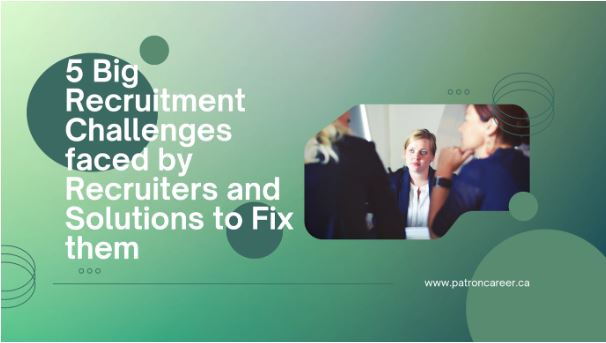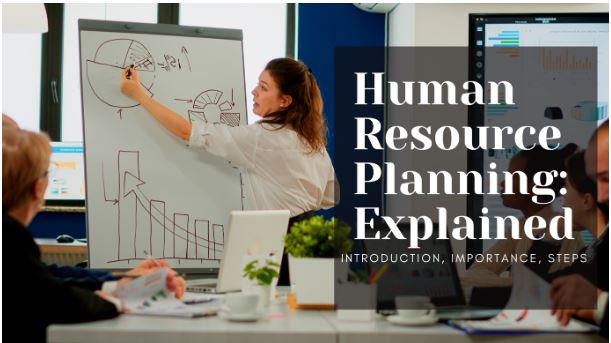
Big Recruitment Challenges
8 August, 2022
Patron Career Staffing firmly believes in adopting a tailored approach to meet temporary and permanent recruitment needs. We safeguard the interest of our clients by finding such workers who are knowledgeable and reliable.
About UsNeed help? Make a Call
32 Dundas Street East Unit A, L5A1W2

How can you effectively forecast future human resource requirements, and what does it mean for your organization? We’ve written this article to help you understand the key aspects of human resource planning and encourage business owners and HR professionals who defy to incorporate a strategic HRP in place, despite its obvious importance. It’s a cognizant fact that HRP when done justly helps your business to grow. Business leaders who have mastered the art and science of HRP are determined to nail it amongst their competitors.
Read on to understand Human Resource Planning in detail.
HRP involves strategic planning and forecasting. That is why it is often known as Workforce Planning, Strategic Manpower Planning, and Employment Planning.
Human Resource Planning is the process of forecasting a firm’s future demand for, and even supply of, the right type of people in the right number in the appropriate time and place.
Activities such as training and development, employee hiring, remuneration, appraisal, and labour relations are derived from HRP. Its regarded as the foremost step, only after which the recruitment and selection process can be initiated. It thus applies the economic construct of demand and supply to the existing human resource capacity of your organization.
To anticipate and successfully manage current and future demands for the talent pool is not a duck’s soup. Companies and businesses all over Canada toil over proper advanced planning to retain the reservoir of knowledgeable and adept talent. Despite constant efforts, they lose $550 billion annually owing to the disengagement of their workforce, as suggested by HR statistics in the US.
To apprehend its importance, we have enlisted major points that highlight the significance of Human Resource Planning:
TA common thread in all businesses is- People. The workforce you will probably need to fill in talent prerequisite in the upcoming period is given by HRP.
When these numbers are adhered to, organizations will be assured of the right number of people for the right type of jobs.
In case of absence, organizations often tend to lay on the line of deficit or endure a redundant labor force. Organizations that have an excess headcount of staff than what is required, are often exposed to maximized costs and waste of time.
Planning assists businesses in rapidly responding to international, political, social, financial, market, consumer, legal, conformity, and cutthroat shifts.
Effective HRP helps unite the standpoints of line and staff managers. Although HRP is initiated and performed by the corporate HR executives, it requires the input and cooperation of all managers within an organization. an individual manager who is responsible for this specific department, best knows the needs of that particular unit or area. Hence, communication between HR staff and the line managers is an essential prerequisite for efficacious HR planning initiatives.
Uncertainty in a business is an inescapable concept. But with a systematic approach to meeting the future needs of the workforce, as averse to hiring on a whim, surely extenuates certain risks for the organization.
HRP eventually decides if your team is poised to win the game today and tomorrow. By recognizing in-house talent, and overcoming technological and other changes, human resource planning gives you a fair appraisal of how far you can stretch your assets and resources.

HRP involves forecasting personnel needs, assessing personnel supply, and matching the demand-supply factors through personnel-related programs. The planning process is influenced by overall organizational objectives and the environment of the business entity. HRP process is thus vital for the continuity of any organization. Here’s a general outline of the same.
This is the first stage of the HRP process which refers to the systematic monitoring of the external environmental factors affecting an organization.
By scanning the environment for rapid changes that will affect the organization, managers anticipate their impact and make adjustments accordingly.
The HR plans need to be efficiently based on organizational objectives, which are the core of any organization.
Once short-term and long-term goals are specified, communicated, and understood by all concerned, the HR department must specify its objectives concerning the HR utilization in the organization. In developing company objectives, specific policies need to be formulated to address the following questions-
You’ll need to judiciously assess future demand for trained employees and the supply of such employees either within or outside of your company.
For instance, in a Manufacturing company, the sales budget would be translated into a production plan giving the number and type of products to be produced. From hereon, the number of hours to be worked by each employee would be computed. Once hours are available, determining the quantity, and quality of employees will be the next step.

One important phase of HRP is ensuring both demand and supply are in equilibrium so that vacancies can be filled by the right employees at the right time.
The next step in the HRP process is concerned with converting an HR plan into an action plan. For this, a series of action programs are initiated. Few of such programs are recruitment, selection and placement, training and development, and succession plan.
This is the final phase, wherein HR plans must include budgets, targets, and standards to measure progress. these may simply report on the numbers recruited against the recruitment targets, along with a report on employment costs against budgets, etc.
HRP is the process of optimum utilization of an organization's human resources. Think of it like a puzzle game. The Human Resource Department ensures that the right pieces which are represented by the employees are placed in the right places to complete the puzzle.
